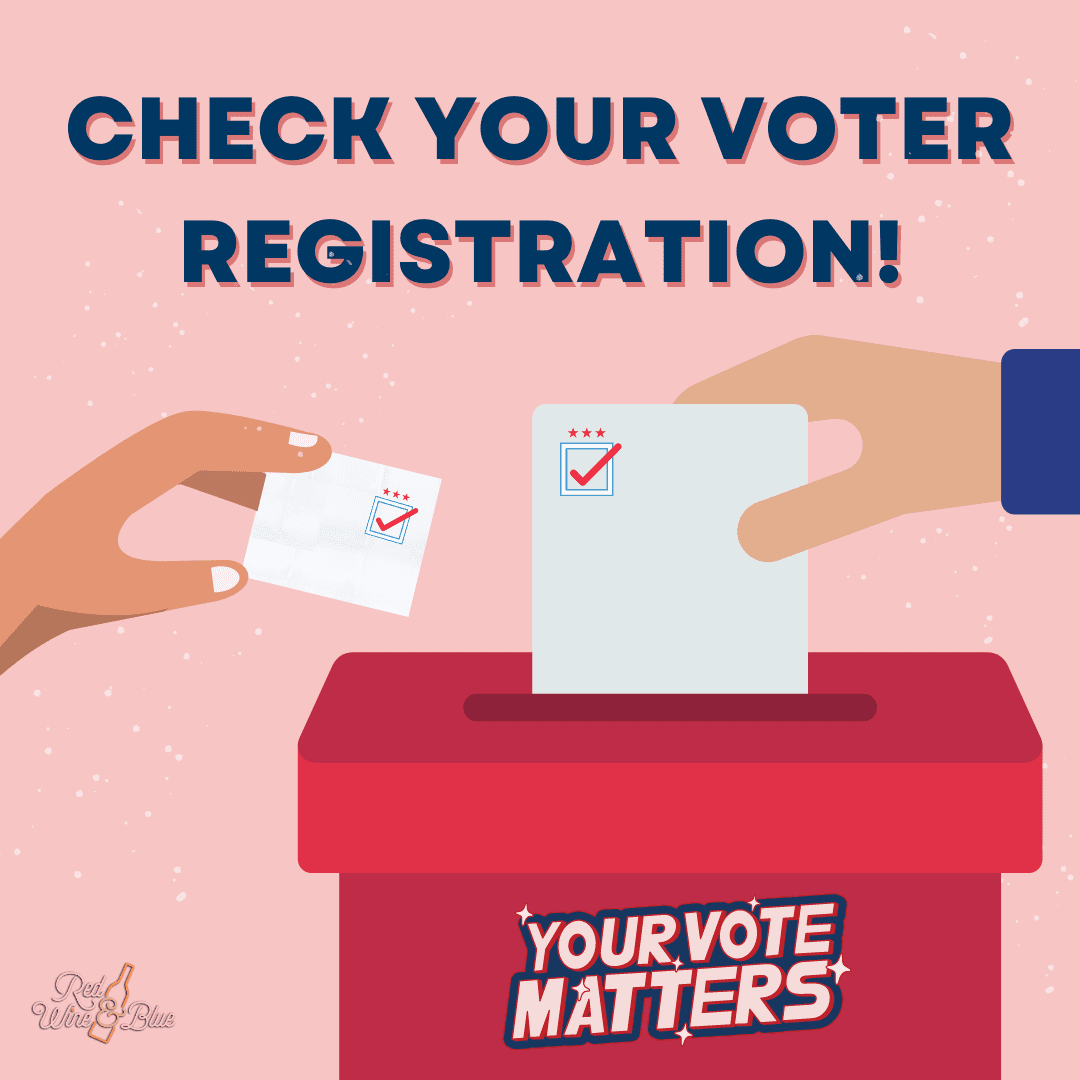
Hi there! Welcome to Easy A–Your go-to source for quick and easy actions you can take in five minutes or less about the issues you care about.
Are you a busy mom? Or maybe your work is so hectic you can’t think about anything else during the day? A lot of us are also taking care of parents or other loved ones too, leaving little time for anything else.
The good news is that these are things you can do while you’re waiting in the school pick up line, on your lunch break, or even at your kid’s soccer practice – anywhere you happen to be! And you can easily share Easy A with your friends so they can be in the know, too! We’ll send you a new action to take every week–just one, we promise –and it will always be something you can do in five minutes or less. Ready to get started? Let’s go!
Do This: Unite Against Soft Censorship
The only way to end censorship, whether it’s the quiet removal of books from library collections or in-your-face book bans, is to fight it head on.
We saw a huge example of this – and a big win for free speech – this week when ABC and Disney returned Jimmy Kimmel and his late-night show to the airwaves after they received massive public pushback to his recent suspension.
It’s hard to believe we have to say this out loud, but no political censorship of any kind should ever happen in America. We can’t let anyone in power try to normalize it. That’s why advocating for our freedom to read is one of Red Wine & Blue’s top priorities. And that’s why we have ongoing programming through our Book Ban Busters campaign, including our partnership with Unite Against Book Bans.
Unite Against Book Bans is hosting Banned Books Week from October 5-11, including Let Freedom Read Day on October 11. Our next Banned Book Club meeting is just after that on October 15.
You can stay informed about news and other events like these by signing up for updates from our Book Ban Busters campaign. Click here to be taken straight to the signup form on our Book Ban Busters webpage. You’ll be the first to know about any news or special events we have about book bans and censorship, but no spam!
Let’s work together to make sure that we can all keep reading whatever we want, whenever we want, for generations to come.
Read This: What’s Happening With Our School Boards?!
Something strange is happening with our school boards. In the past few years, local school board elections went from being low-funded, grassroots campaigns to becoming battlegrounds for extremist takeovers. National conservative political groups are pouring excessive amounts of money into these races to get extremists elected to school boards all across America. And it’s happening in your district too.
In 2021, school board races started getting more attention as extremists began manipulating the frustration parents were feeling about COVID-era school closures (You might have even had conversations with parents in your community who were extremely upset over school closures and mask mandates). That frustration created an opening for outside groups. They latched on to that anger and used it to turn those parents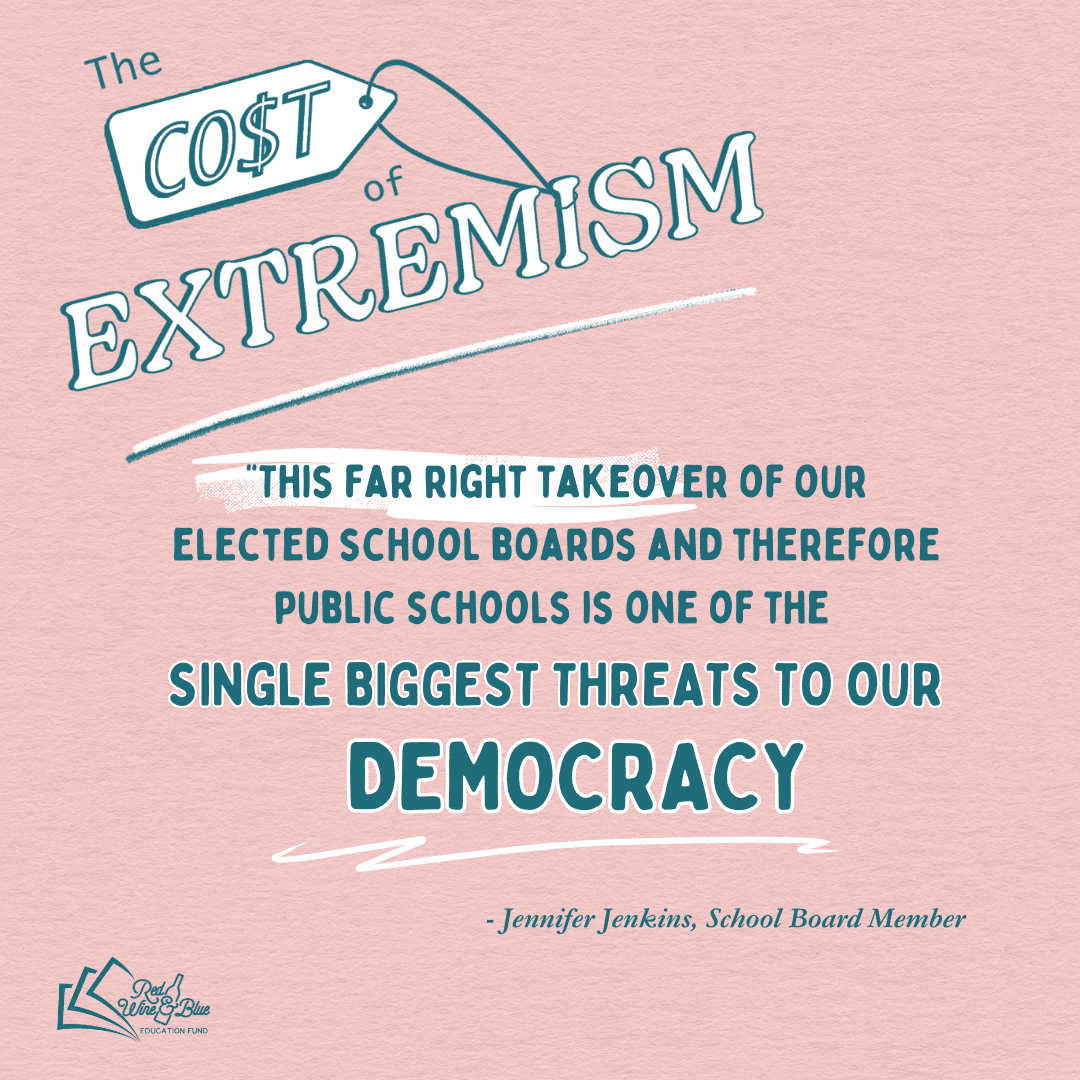 against public schools. And then suddenly, we had a loud, vocal minority of parents disrupting school board meetings, demanding that schools re-open and that mask mandates stop.
against public schools. And then suddenly, we had a loud, vocal minority of parents disrupting school board meetings, demanding that schools re-open and that mask mandates stop.
In the midst of this chaos, Moms for Liberty was founded, and those same parents who were angry about masks started speaking up at school board meetings about other things – wanting to ban books, attacking school curriculum, and gutting diversity and equity policies. And these attacks didn’t just happen at school board meetings. They started targeting school board members at their homes. Suddenly being a school board member, or even an advocate for public education, could result in personal attacks.
What’s even more disturbing is that these school board fights are meant to look like grassroots efforts, but in reality they’re actually part of a larger attempt by extremist groups to take over school boards and eventually dismantle public education. If that sounds pretty extreme, it’s because it is. And many extremist politicians are actually saying it out loud. And that’s really the bottom line here: public education benefits all of our kids, but extremists want to take it away.
These attacks are hurting our public schools, our teachers and most importantly our kids. Children shouldn’t be paying the price for extremism – but they are. And that’s why we–as parents, educators, and community members–need to know what’s going on.
We Interrupt Your Regularly Scheduled Programming: Make Your Plan to Vote!
The 2023 election is less than SIX weeks away! October is right around the corner and before you know it, we’ll be putting away the Halloween decorations and heading to the polls.
So we have a question for you: what’s your voting plan?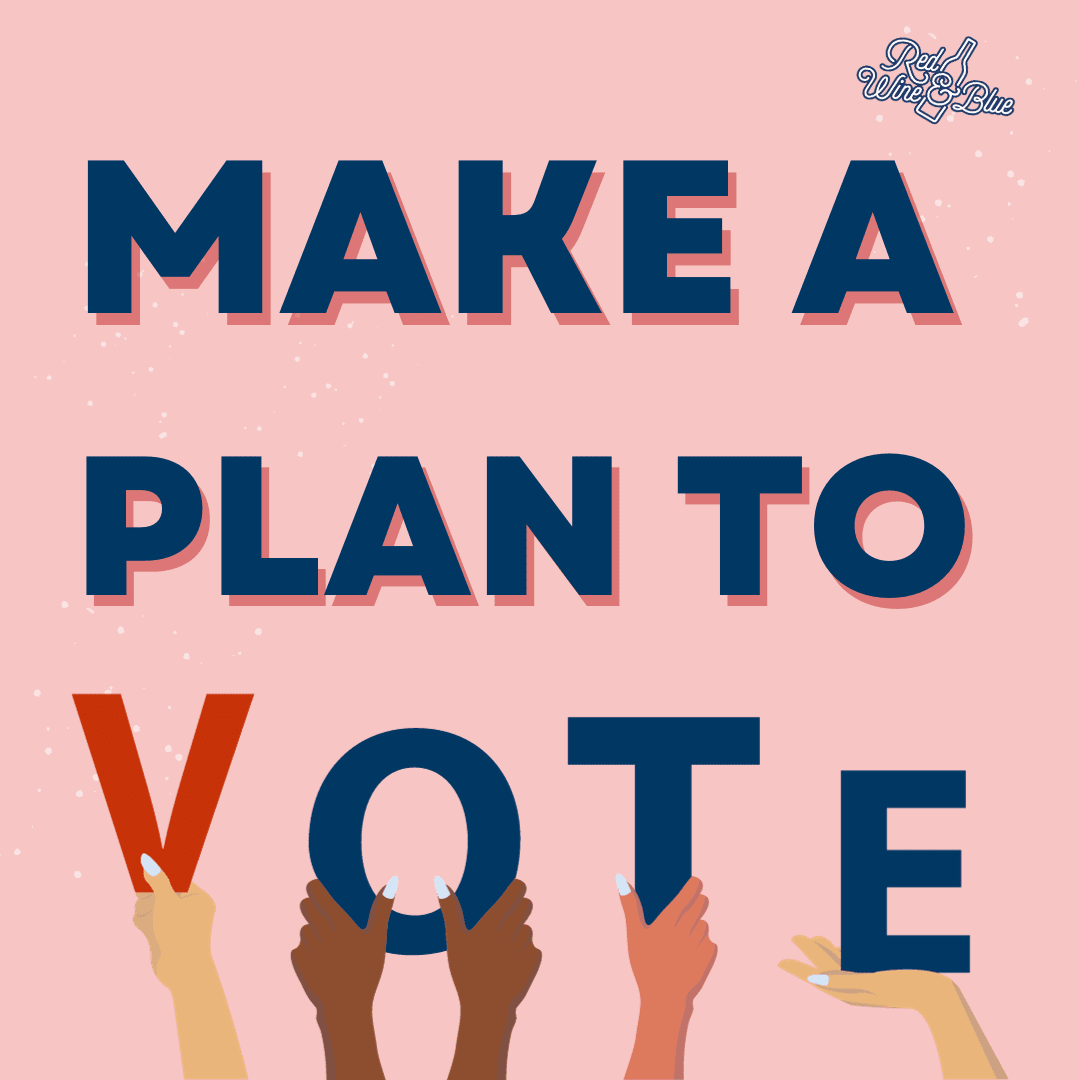
Step 1: Do you know when and where you can vote? In many states you must be registered before election day, and those deadlines are fast approaching in October. So if you haven’t done it yet, check your voter registration status.
Step 2: Nail down the details. Will you vote early in person, vote by mail, or wait for election day? What time of day will you head to the polls? Do you need to schedule around your work or kids? Some employers do allow you to take time off to vote. Use your state’s board of elections website to find polling locations and times. Once you decide, put it on your calendar and set a reminder! And be sure to make a note of what time the polls close in your district. If the polls close while you are still standing in line, don’t leave. Stay in line until you vote. It’s your right!
Step 3: Now that you have a plan, reach out to your friends, family, neighbors and coworkers. Make sure everyone you know is planning to vote by November 7th!
Do This: Tell Lawmakers to Ban Assault Weapons
By now you’ve heard from some survivors of mass shootings, and you’ve learned about the true cost of active shooter drills. And you’re probably wondering why we are spending billions of dollars for active shooter drills instead of addressing the actual problem of gun violence. Mainstream women (and men) are becoming increasingly frustrated at the lack of action by our elected officials. We know![quote: Students want change... They want to see [lawmakers] banning assault weapons.](https://redwine.blue/wp-content/smush-webp/2023/09/CostofExtremism_Tretta_Option1.png.webp) that active shooter drills are just a bandaid on the problem of gun violence, and not a solution.
that active shooter drills are just a bandaid on the problem of gun violence, and not a solution.
Ready to take action?
It’s past time to support gun sense legislation – join students and parents across America and tell Congress to support an assault weapons ban. Click here now to send a letter to your lawmakers. We’ve written it for you–all you have to do is click a few buttons! Thanks for taking action this week.
Watch This: School Shooting Survivor Talks About Gun Violence
Now that you know the true cost of active shooter drills, you’re probably wondering – why are 95% of school districts still participating in these drills? You’re not alone. Mainstream moms are fed up with a culture that values gun ownership over the lives of our children. Why are our children paying the cost of mass shootings while our legislators continue to ignore the problem?
That’s a question Ashbey Beasley wants answered. Ashbey was not involved in any gun violence prevention work, until she survived a mass shooting with her young son, at a Fourth of July parade. Now she speaks out about gun violence and the unexpected costs of active shooter drills. Ashbey is not willing to accept that we have normalized mass shootings with active shooter drills. And neither are we.
Watch this short clip to hear more of our interview with Ashbey Beasley:
To listen to the full podcast episode that explores the true cost and impact of active shooter drills, click here.
Read This: The Impact of Active Shooter Drills
Did you know 95% of school districts conduct active shooter drills? Some fast facts:
- There is NO research that backs up the value of active shooter drills.
- There’s significant evidence that these drills actually have a negative impact on the mental health of students, teachers, and school staff.
And here’s the kicker: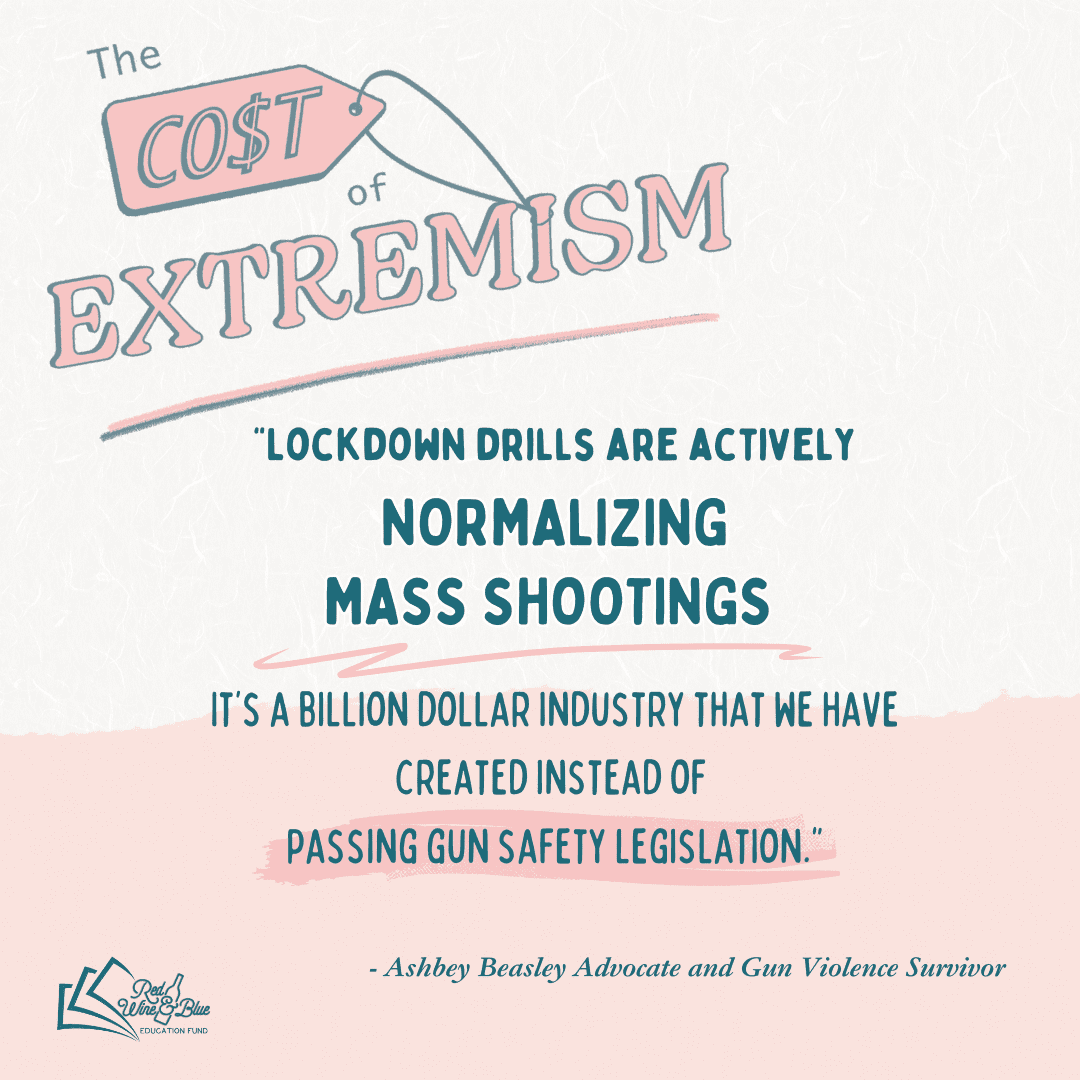
- The push for active shooter drills has created a $2.7 billion industry that feeds off the fear of school shootings. That’s right…companies are profiting off our kids’ fear. And these drills are just a bandaid on the problem that elected officials refuse to take action on.
Research conducted by Everytown for Gun Safety and Georgia Tech found that active shooter drills in schools are associated with a 39% increase in depression, a 42% increase in stress and anxiety, and a 23% increase in mental health problems. There was also a 22% increase in concerns over death in students, some as young as five years old. These fears of death also affect teachers and parents. So while active shooter drills are continuously being pushed instead of passing gun safety regulations, the long term impact on schools and the wider community is being ignored. And our children are paying the price.
Victims of gun violence often talk about a tipping point, when enough Americans will demand action on gun violence in this country. We know it is past time that our elected leaders take action on gun violence prevention. Children should not be the ones paying the price for this extremism.
Thanks for taking your easy action for this week. See you next Thursday!
We Interrupt Your Regularly Scheduled Programming: Are You Registered to Vote?
Feeling a little busy? We get it. Summer vacation plans are in the rearview mirror. It’s back to school season, and fall sports are picking up. And the holidays are right around the corner – but do you know what else is coming up? Election Day! And because it’s an “off-year election” voter turnout is usually pretty low. So that means your vote is even more important! That’s right…You have the power to influence the outcome of this election! This week’s Easy A action is simple, just check to make sure you are registered to vote and that all of your information is up to date. Head to www.vote.gov to check your voter registration. It’s that easy! Thanks for taking your Easy A for this week.
Take it One Step Further: Decoding Parents’ Rights
Sign this petition right now to tell mainstream media like ABC, NBC, and Fox News that extremist groups like Moms for Liberty do not speak for you. Remind them that regular American parents like you and me don’t support banning books, eliminating sex education, or whitewashing American history. We want our public school teachers to have the resources they need to make sure our kids are learning what they need to know to prepare them for the future.
Share This: Decoding ‘Parents’ Rights’
Now that you know the truth about the misleading “Parents’ Rights” movement, you can help us get the word out about it! We tend to underestimate the influence we have, but you, my friend, are an influencer! When it comes to your friends and family, you are a trusted source of information. The people you know are more likely to believe you over a complete stranger. Are you ready to use that power?
Click below to share this post online to spread the word about extremists trying to take away our freedom to parent our kids.
Listen to This: Decoding Parents’ Rights
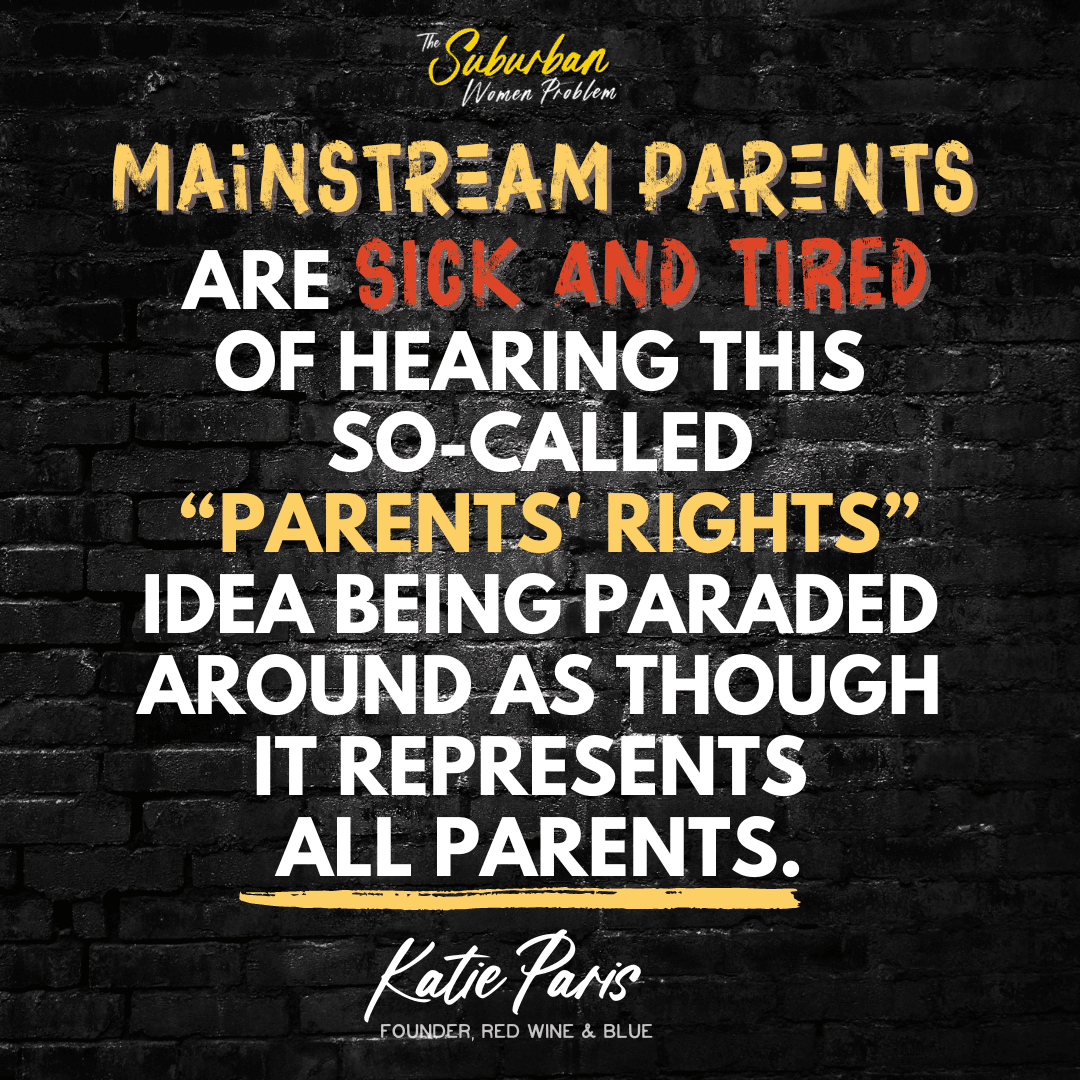
Mainstream parents have had enough of the “parents’ rights” crowd telling them how to parent their children. We all want to be able to make parenting decisions that are right for our family. Listen to a short clip of our conversation with Red Wine & Blue founder, Katie Paris on The Suburban Women Problem podcast. Katie declares that we all have the freedom to parent our 21st century kids and we couldn’t agree more. Our kids need to be ready for the modern world.
If you want to hear more of our conversation with Katie Paris, you can listen to the full interview on The Suburban Women Problem podcast, season 3, episode 13 – Mainstream Parents are Calling BS with Chastain Buttigieg and Katie Paris. Also available anywhere you get your podcasts.
Read This: Decoding ‘Parents’ Rights’
Have you noticed everyone seems to be talking about “parents’ rights”? Lately, it’s been all over the news and even in our local chat groups. On the surface, it sounds like a good thing, right? I mean, we probably all agree that parents should have certain rights when it comes to parenting our kids. But don’t we already? What exactly are they talking about?
Here’s the thing. Extremists are using the term “parents’ rights” to confuse and mislead us. They want to control how ALL parents raise their kids and they want to pass laws to do it. According to them,there’s only one “right” way to raise kids, and it’s their way.
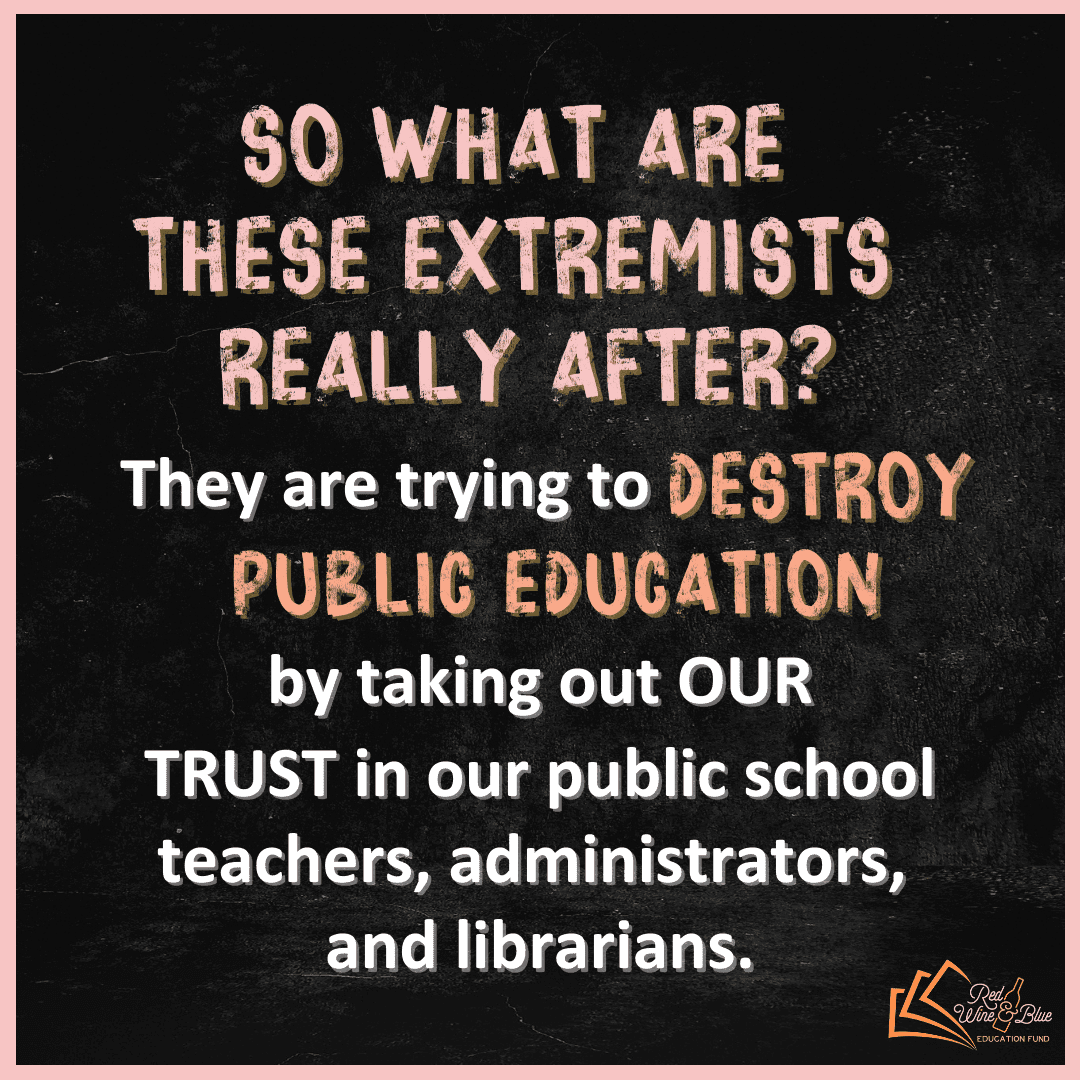 So what are these extremists really after? They are trying to destroy public education by taking out our trust in our public school teachers, administrators, and librarians. Public education is the great equalizer. Access to free public education is key to our democracy. But these folks don’t want every American kid to be prepared for living in the 21st century – they just want that for a select few.
So what are these extremists really after? They are trying to destroy public education by taking out our trust in our public school teachers, administrators, and librarians. Public education is the great equalizer. Access to free public education is key to our democracy. But these folks don’t want every American kid to be prepared for living in the 21st century – they just want that for a select few.
Parents should be free to make their own parenting decisions – about their own kids. For example, if a parent doesn’t want their kid reading a certain book, they can make that decision and let the teacher know, and the teacher can give that student a different book. But that one parent shouldn’t get to decide whether all the other kids in that class can read that book. That is NOT their right as a parent. But that’s exactly what this very loud, but very tiny group is trying to do.
And even scarier, here are some other things they are trying to sneak in under the guise of the “parents’ rights” agenda:
- Tracking kids’ periods
- Requiring genital inspections for kids to participate in school sports
- Suing teachers who wear “I’m here” badges in support of LGBTQ+ students
- Banning books about the Holocaust, civil rights, climate change, and accurate American history, even books about historical figures like Anne Frank, Ruby Bridges, MLK Jr., or that contain LGBTQ+ characters.
- Erasing history of racism from textbooks
- Completely defunding public schools in a move to privatize education
None of these restrictions actually protect individual freedom. Instead, they’re about controlling what students and families believe, do, read, and learn. These bans and laws take away our rights and the rights of our kids.
It’s important to understand that his whole “parents’ rights” campaign isn’t even a real movement. It’s driven by national extremist groups with big outside funding. In many cases, the people yelling at school board meetings don’t even have kids in the school district. Even worse, they’ve become known for using harassment and intimidation to silence librarians, teachers, parents, students and community leaders. Moms for Liberty members have threatened people with gun violence, accused parents of child abuse and grooming, and even tried to have children removed from healthy family homes.
The chaos is causing real harm in our communities, and it’s getting expensive. One school district has racked up $1 million in PR and legal fees as a result of its discriminatory policies. Those are taxpayer dollars that could have gone to improving our public schools. And that’s really the whole point. The extremists causing this chaos are intentionally undermining our public schools, which eight in ten children in America rely on for their education.
Mainstream parents like you and me don’t want to be told how to raise our kids. Parenting is hard enough – we’re done letting extremists who want to ban books, censor school curriculums, whitewash history, and target families of transgender children control the conversation. We want the freedom to raise our kids and prepare them for the real world.

